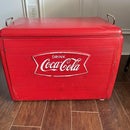Introduction: Crossbow Pistol
Not as lethal as it sounds, and more of a novelty than a weapon, I created this device to get rid of a big pail of metal bottle caps, the kind used on soda and beer bottles. Although they have a crimped edge and are usually bent from being opened with a bottle opener as well as being very non- aerodynamic, these caps make a fairly good projectile if you are not too concerned with range and accuracy. Also, the trajectory is affected by the wind so I suggest shooting in a sheltered area. Having said that, I would caution that you wear safety glasses when firing this pistol and never let children use it without supervision. As they say, it's all fun and games till someone loses an eye! If using indoors, I suggest the garage or unfinished rec room. The caps are metal and can dent or chip paint and furniture. If shooting outside, don't shoot near your classic '57 Chevy or new BMW for the same reason. Depending on materials used you can achieve a distance of fifty feet or more. I suggest aiming at a target such as a plastic pail turned on its side. I am providing a guideline for building your own as the materials you use will differ and that will affect the building process.
Step 1: Making the Bow and String
The bow is made from a 1/4 inch thick strip of poplar, 3/4 inch wide x 12 inches long, however, most hardwoods should work. After cutting it to size, it was soaked in water overnight then clamped to a solid round surface, in my case, the table of my scroll saw which as about a 16 inch diameter but you could just as easily use any round surface. Left to dry overnight it will retain the curve. You should drill three 1/8 inch holes, one in the middle and one about 1/4inch from each end.. The string is simply a mini bungee cord, about 10 inches long. I bought a box of 20 from my local auto supply store for $5.
Step 2: Determine the Draw
Glue and screw the bow to the end a scrap piece of 1x2 pine through its centre hole. Attach the bungee cord hooks to the two end holes. With a finger on each side of the 1x2, pull the cord back as far as it will go. Mark with a pencil.
Step 3: Notch and Firing Pin
Make a cut at the pencilled line about as deep as the bungee cord's thick ness. Make another cut at a 45 degree angle to that, creating a notch so that the flat part faces the bow and the angle faces the back. With a file and sandpaper round the front corners of the flat cut so it can release the bungee more easily. Drill a 9/32 inch hole in the middle of the notch right through the wood. Push a piece of 1/4 inch dowel though the hole. This will be the firing pin. Stretch the bungee so it catches in the notch, depressing the dowel. Push the dowel up from the bottom so it releases the bungee. If it works you've done the hard part but to shoot bottle caps you need to build a retainer and trigger.
Step 4: Retainer and Trigger
You need a retainer to load and hold the battle cap until you are ready to fire it. For this use large craft sticks known as tongue depressors. Don't cut them with a saw. Instead use heavy duty shears. For the retainer cut a piece about 2/3 of the stick. This will be the part that holds the cap in place. Cut another stick in thirds and stack and glue together as in the diagram. For the trigger, glue two full sticks together.
Step 5: Finish and Fire the Prototype
Glue and screw the retainer to the top of the pistol so the short stacked pieces are behind the notch and the longer piece covers and extends ahead of the notch. Cut an angle in the wood ahead of the firing pin on the bottom of the pistol so that when the trigger is placed in it and you squeeze it, it will raise the firing pin. You will have to adjust the length of the firing pin. When it works, glue and screw the trigger to the angle. Of course, you have by now test fired the pistol at every step, so you can add a grip of your own design and shorten the length of wood accordingly. Get some bottle caps and blast away. Of course, if you are like me, you won't be satisfied with how it looks so I have a final step.
Step 6: Make a Bunch
Take it apart and use the original body and grip as templates because while at it you may as well make bunch of them. It's easy to make a number of bows at once and the retainer and triggers are simple enough to make as well. Once you know the prototype works you can mass produce them based on the original. If you sand all the pieces carefully the finished products will look terrific as well.













